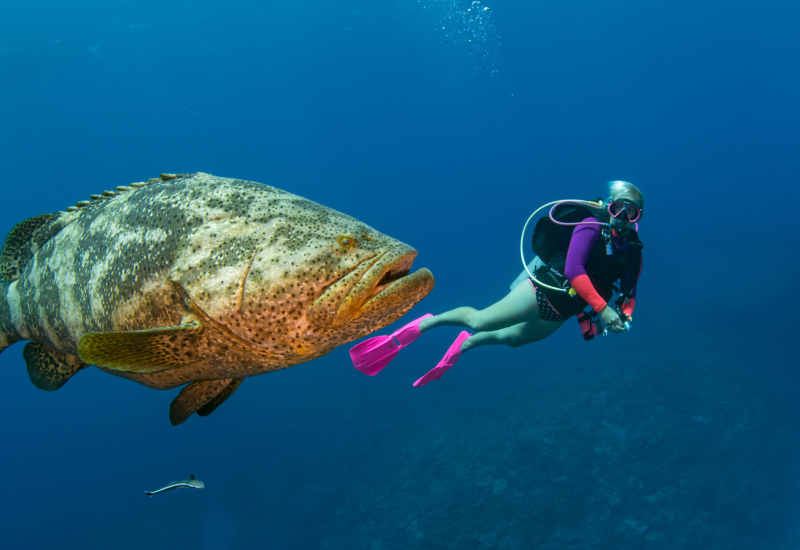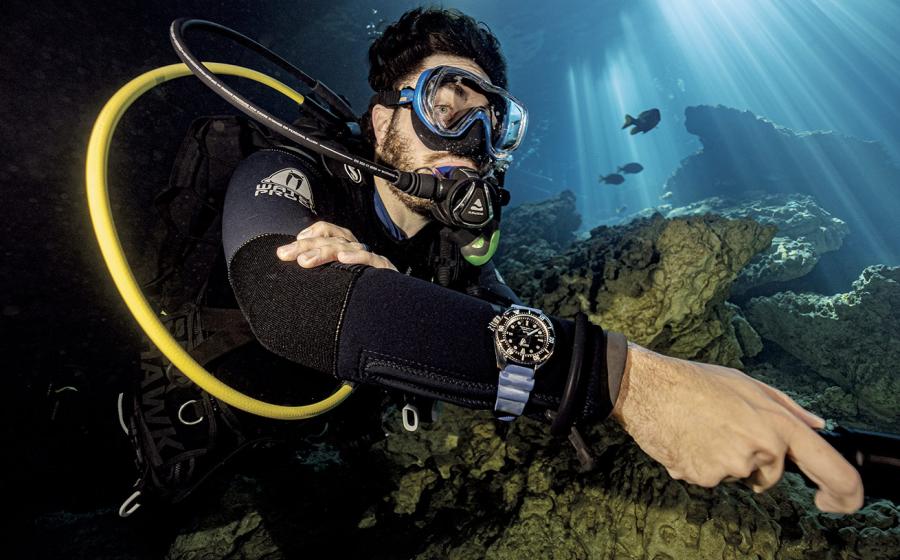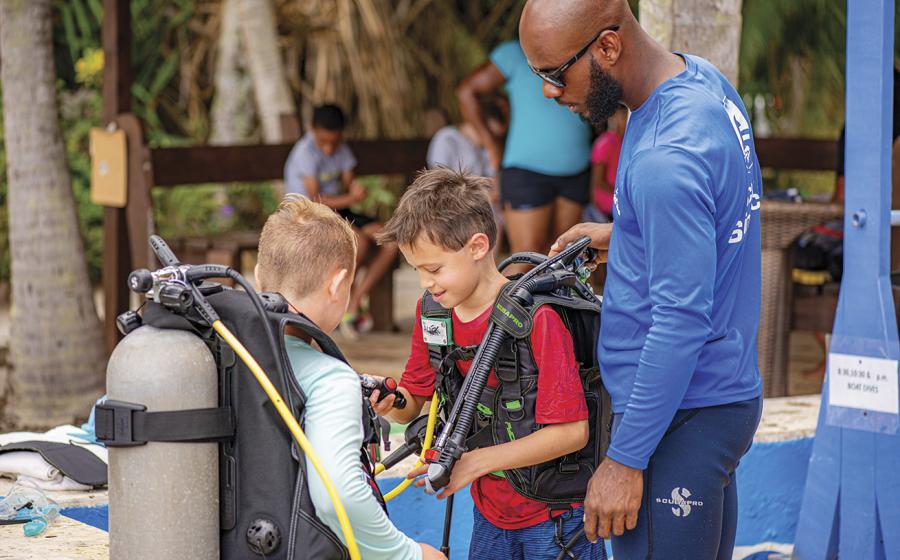A Diver's Guide to Bormes-les-Mimosas, France
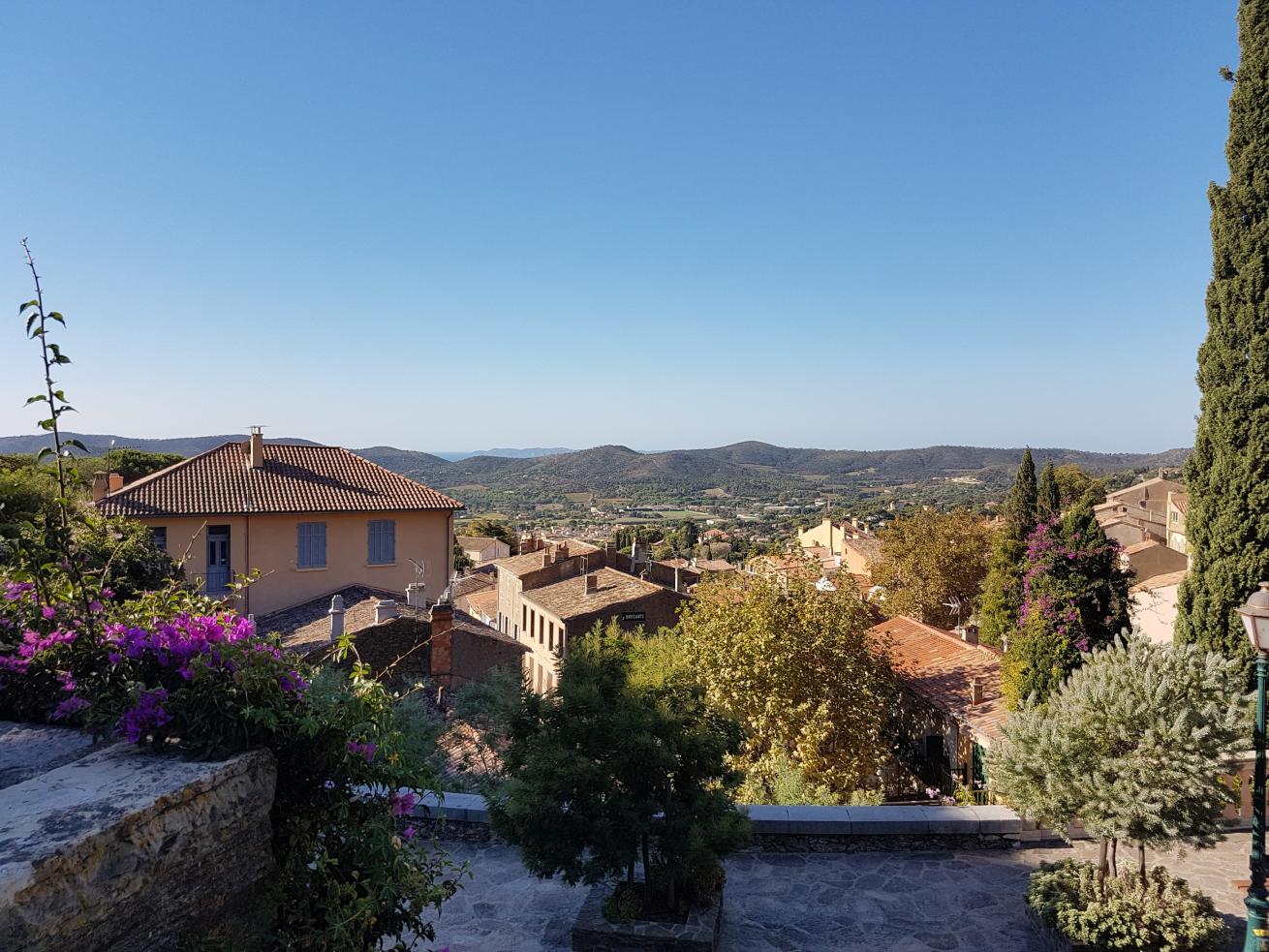
Carrie MillerThe 12th-century village of Bormes-les-Mimosas is a picturesque Provençal hamlet.
The 12th-century village of Bormes-les-Mimosas is part of the Var department in the central-southern region of Provence, sharing the fabled French Riviera coastline with glittering towns like Saint-Tropez, Cannes, Nice and Monaco. You’ll be forgiven if, like us, you’ve been blinded by the Côte d'Azur’s sparkle and neglected this rewarding dive destination.
Bormes overlooks the Mediterranean national park of Port-Cros, established in 1963. Because of this early protection, divers will discover a lively marine-scape of sea grass beds, rocky landscapes and wrecks, circled by large, healthy schools of barracuda, bream and respectably-sized grouper. Port-Cros also encompasses terrestrial landscapes and bird sanctuaries, making it a place where land and sea are valued equally. Any lover of living things will feel at home here.
Bormes is also flanked by the historical birthplace of scuba diving (Sanary-sur-Mer) and the Musée Océanographique de Monaco, making it a must-visit destination for ocean enthusiasts.
Best of all, this gem is easily accessed from Marseille Provence Airport—two hours by car and four by public transport.
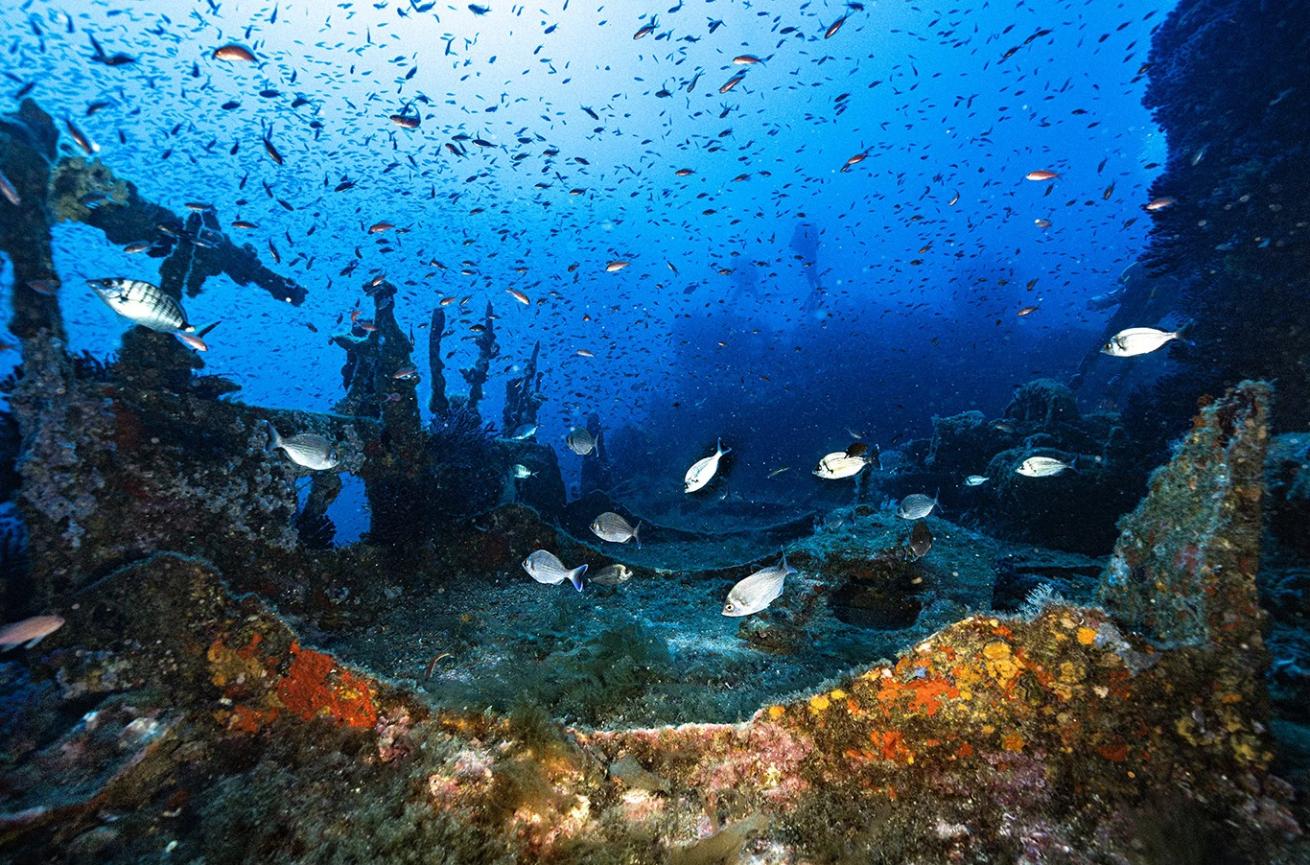
Courtesy Berrard Jean-LouisThe area features a number of diveable wrecks that attract large schools of fish.
The Greater Garden
Port-Cros National Park was the first in Europe to protect both marine and terrestrial landscapes. The park covers around 4,200 acres of land and 7,166 acres of sea, including several islands and islets. Port-Cros teems with life in a way that will introduce divers to how the Mediterranean could be. (Only 1.27 percent of the Mediterranean Sea is protected by marine parks that effectively implement management plans.)
The past 10 years have seen the return of bigger fish to the area (like swordfish and barracuda), and eight different species of whales and dolphins have been recorded in Port-Cros. It was far and away the most marine life we saw in the Mediterranean—Port-Cros reminded us of diving in the Caribbean or South Pacific.
Related Reading: Dive Travel Guide: 38 Places to Dive in 2025
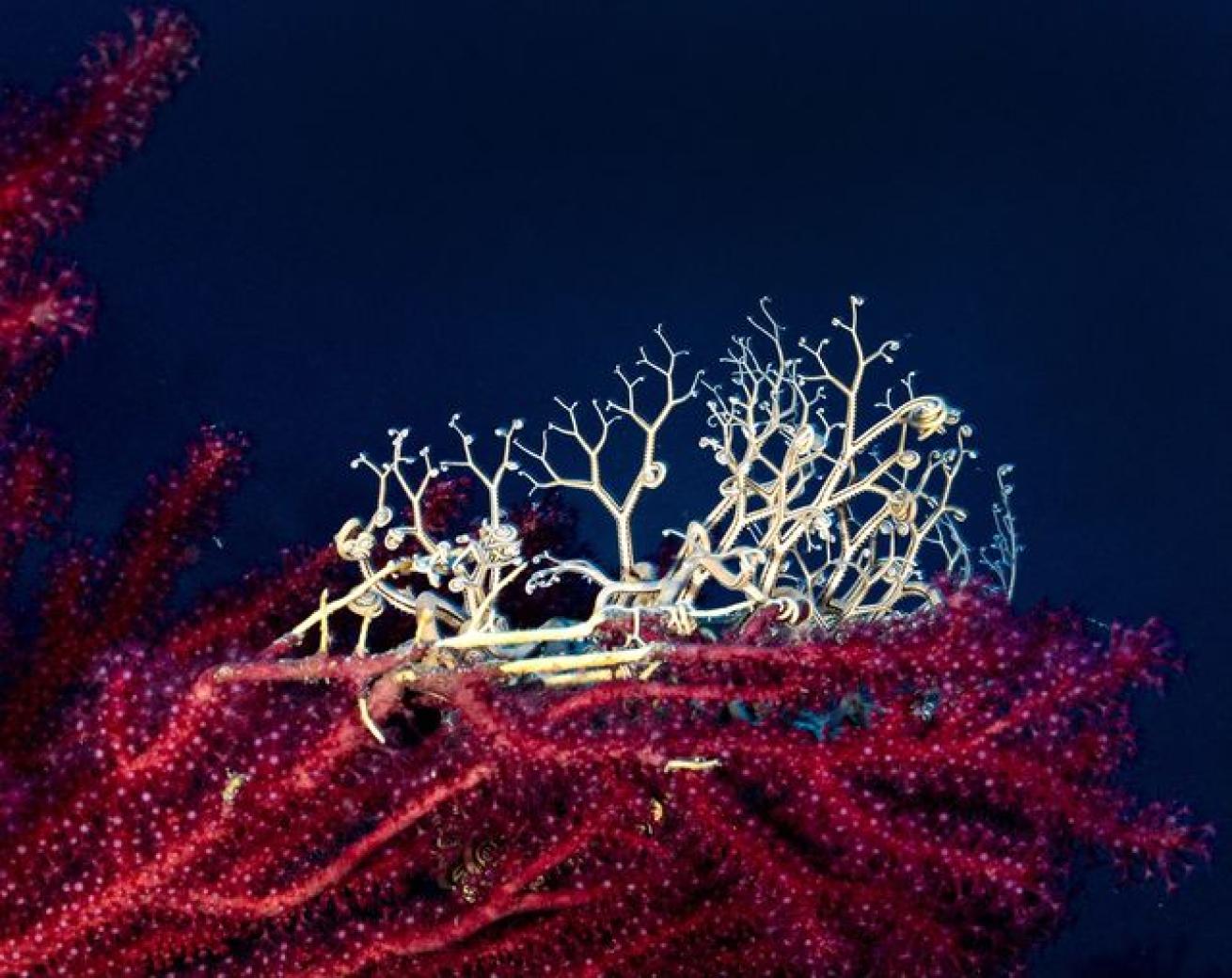
Courtesy Berrard Jean-LouisWrecks are covered in healthy, colorful growth.
Year-Round Diving in the Mediterranean
There is a wealth of dive sites in the area, most within a 30- to 45-minute boat ride from the town port. Gabinière is a tiny island that drops into the sea, with drift dives curving around either side. From the drop point, strong currents push divers over spurs of rock, past schools of barracuda, large grouper, and gorgonian fans. Eventually, the current eases and the area shallows into seagrass beds; keep your eyes peeled for small critters tucked away in the rock crevices.
There are also a number of diveable wrecks in the area, like the popular Le Grec (The Greek), built in 1912. A floating mine tore the bow off this 177-foot-long ship in 1945. Le Grec lies in 115 to 154 feet of water, is penetrable, and is a deco dive. It is covered in growth, including gorgonians, and surrounded by life: lots of macro, grouper, moray eels, and scorpionfish, including large schools of fish.
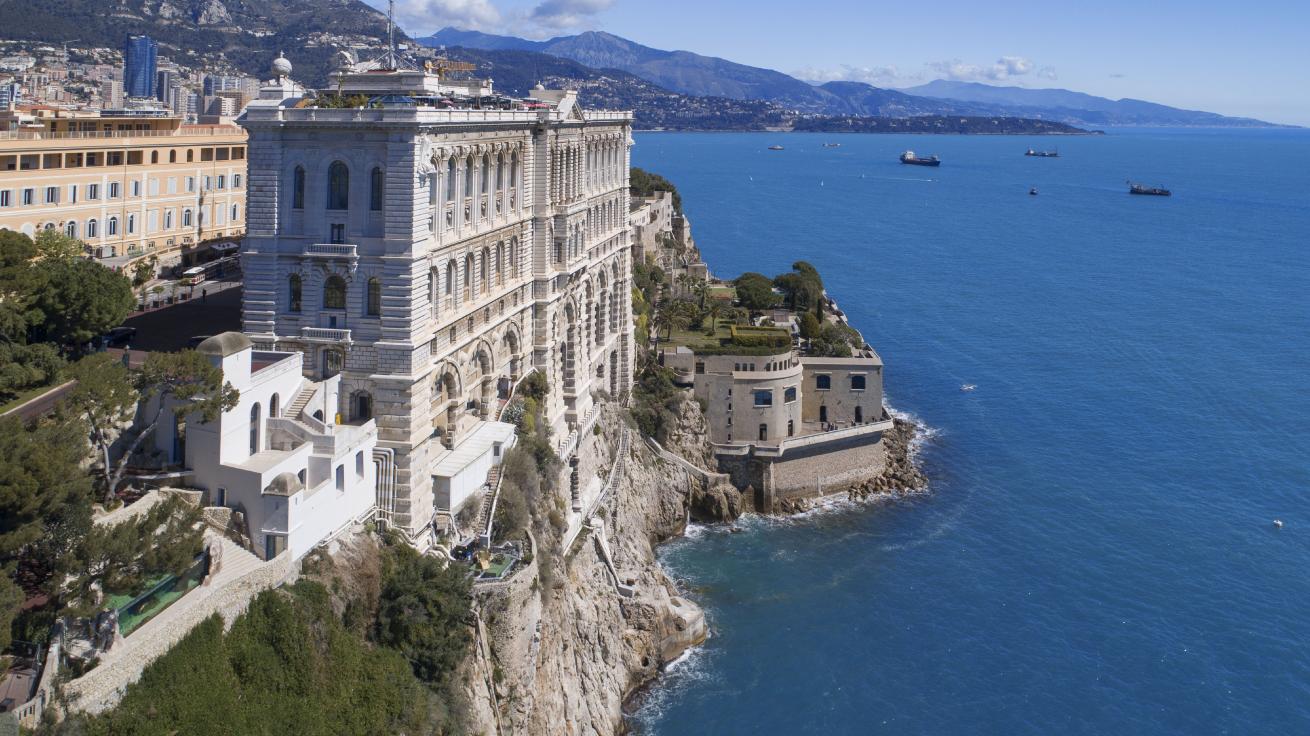
Courtesy Musée Océanographique de MonacoExterior of Musée Océanographique de Monaco.
A Picture-Perfect Provençal Hamlet
Bormes-les-Mimosas is ideal for dive travelers (divers seeking adventures on land as well as underwater) or divers traveling with non-diving companions. There is so much to do here! The sienna-tinged medieval township of Bormes (named after the bright yellow Australian mimosa flowers that herald the beginning of spring) is surrounded by 12 vineyards and overlooks a natural coastline of more than 10 miles of secluded, sandy beaches and coves, shaded by wild pinewoods. Hiking, cycling, wine-tasting, and dining are a few of the popular activities beloved by visitors and the people who call Bormes home.
No visit to Bormes is complete without two day-trips for ocean lovers. To the west is Sanary-sur-Mer, just beyond Toulon, about one hour’s drive from Bormes. Sanary-sur-Mer is where a group of friends—including Jacques-Yves Cousteau, Frédéric Dumas, and Philippe Tailliez—pioneered scuba diving techniques and equipment.
The Musée Frédéric -Dumas is a divers’ treasure trove, containing information (much of which is in French, but English translations coming) and early equipment, including the Aqua Lung designed by Cousteau and Émile Gagnan, and the first molded weight belt, with weights designed in circular shoe-shine tins for size consistency. (Even the very first belt was designed to be a quick-release with one hand.) This place provides fascinating insight into the beginnings of scuba diving, as well as the love these pioneers held for the ocean.
About two hours’ drive to the east of Bormes is Monaco, home to the extraordinary Musée Océanographique de Monaco, an elegant institution built into the very rock of the coastline. It has kept a watchful eye on the oceans for more than 115 years.
This dazzling museum holds exhibits, historical collections, and aquariums intermingled with marble staircases, mosaic floors and floor-to-ceiling windows overlooking the sea. Most aquarium species on display (including all coral) are grown, rather than collected, and displays are informative, interactive, and insightful.
Spending time here—from the cafes of Bormes, to the magic of Port-Cros, to the history brought to life by the museums—is a wonderful reminder of the role we play in the ocean’s life, the role it plays in ours, and the greater garden we share.
Related Reading: Unwind on Petit St. Vincent, in St. Vincent and the Grenadines
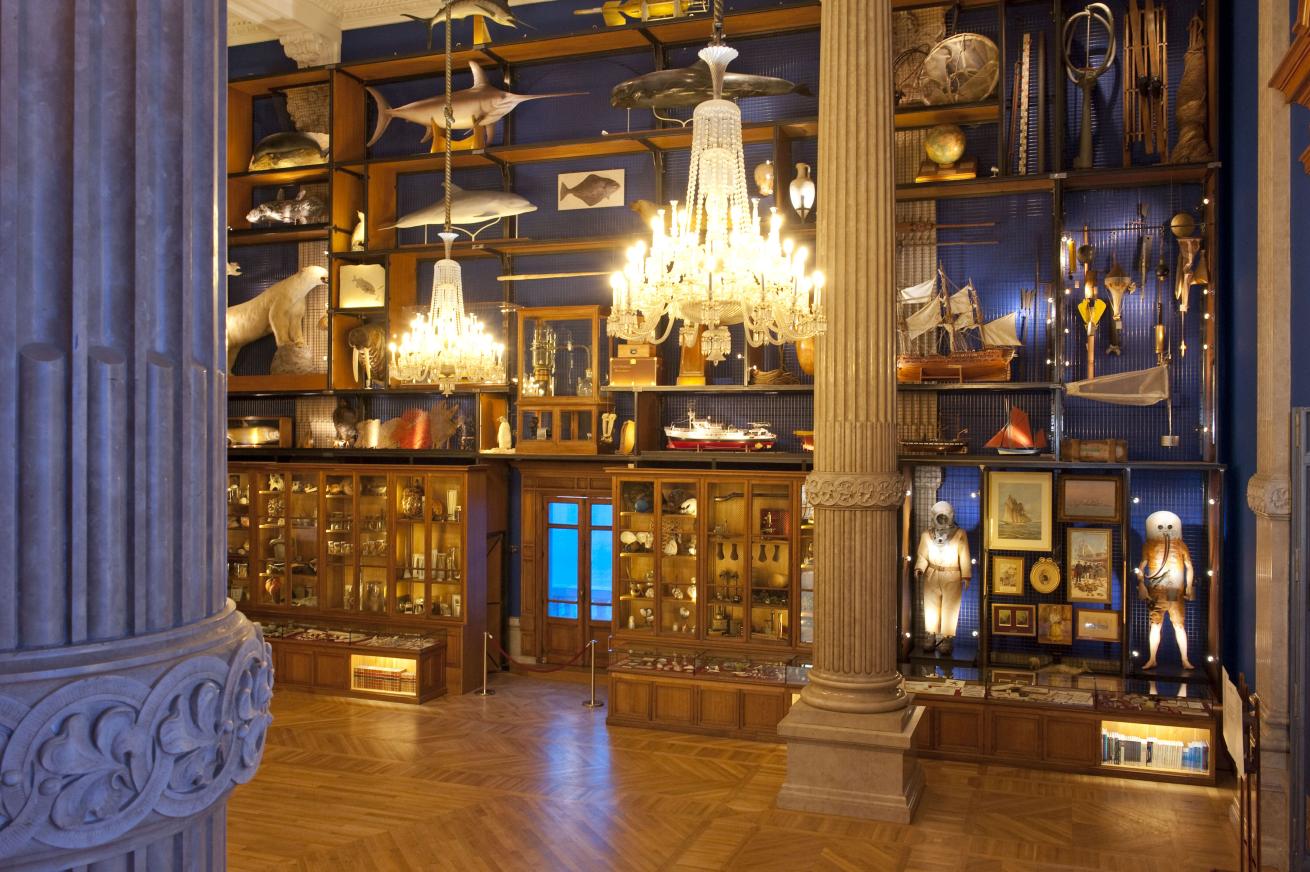
Océanographique de MonacoThe extraordinary Musée Océanographique de Monaco is an elegant institution that has kept a watchful eye on the oceans for more than 115 years.
NEED TO KNOW
When to Go: French summers are hot and busy. September and October are cooler and quieter (the ideal time for divers to visit). The winter off-season is uncrowded, sunny and perfect for outdoor activities, but many places are closed. Check in advance.
Dive Conditions: On average, visibility ranges between 49 to 66 feet. Water temperatures are around 54°F in winter and 72°F in summer. Depths range from 66 feet to 138 feet for wrecks. Suitable for divers of all levels, but divers with some experience will probably enjoy it more, due to currents and depth.
Operators: We dove with Bormes Plongée, a fun and professional outfit based in La Favière (a few miles from Bormes), offering everything from guided dives to training (new divers to more advanced certifications) from April through November; diving is by request from December to March.
Travel Tips: In France, divers need to have a medical certificate of fitness to dive that is less than one year old. You’ll be asked to present this at the dive shop before you’ll be permitted to dive. Get this sorted before you travel. Also, most European diving centers expect divers to be fairly self-sufficient. If you need a little more attention, request a private guide.
Make a Difference: In 1902, Albert I of Monaco said: "The duty of Oceanography is to detect the hazards caused in all countries by the overexploitation, whether poorly regulated or improperly monitored, of the resources of the sea." Since its inception, the Musée Océanographique de Monaco has dedicated itself to science, research, education, and the sharing of ideas. Today, its main focus is advocacy and outreach, connecting science to the general public and decision-makers. (Donation and sponsorship opportunities at the museum or via their website.)
BIO
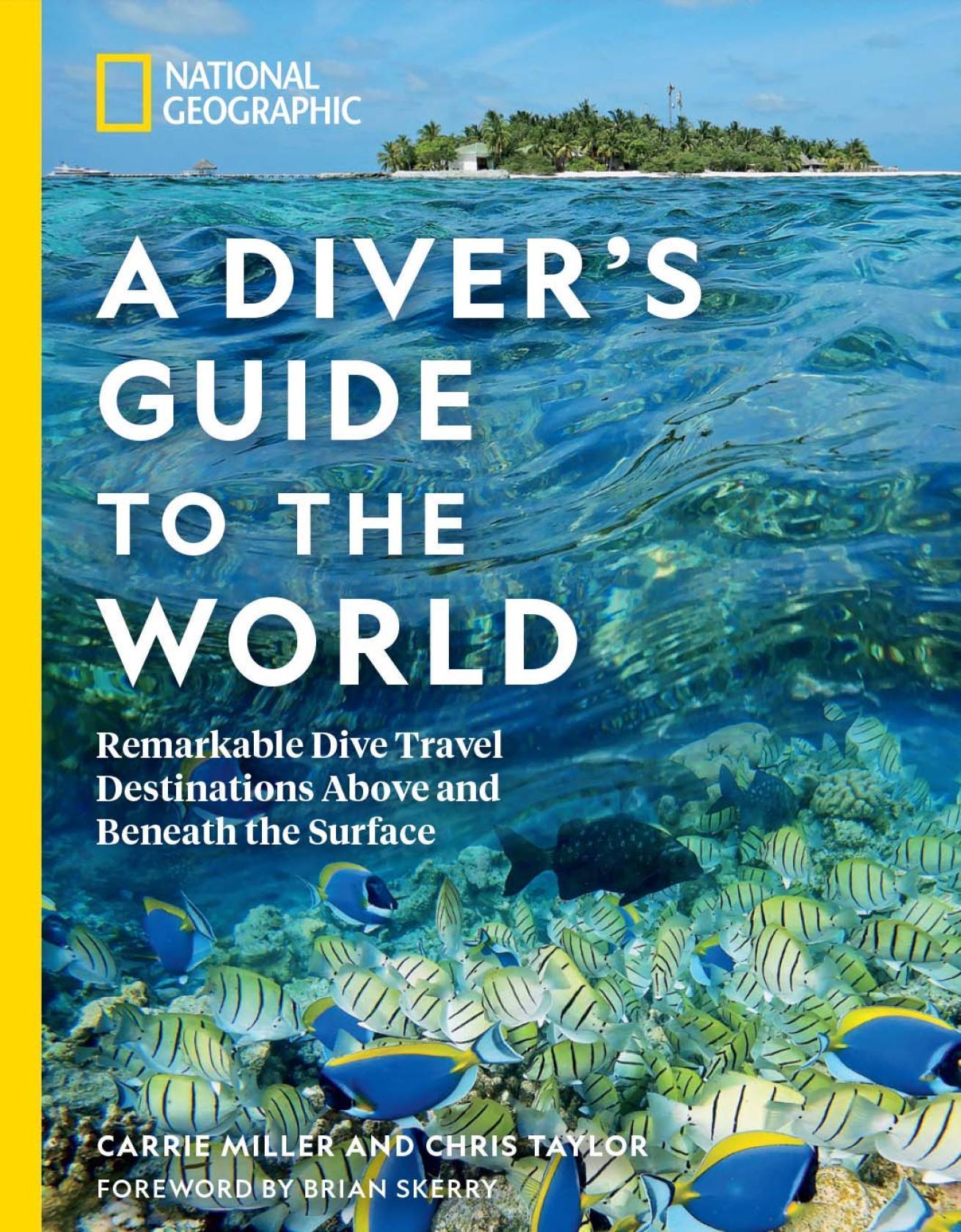
To create their unique National Geographic book, A Diver’s Guide to the World: Remarkable Dive Travel Destinations Above and Beneath the Surface, dive travel experts Carrie Miller and Chris Taylor traveled to 50 inspirational locations around the world, spending more than 250 hours underwater. Carrie is also the author of 100 Dives of a Lifetime: The World's Ultimate Underwater Destinations.
Follow their travels at @beneaththesurfacemedia and @carriemiller_writer.

